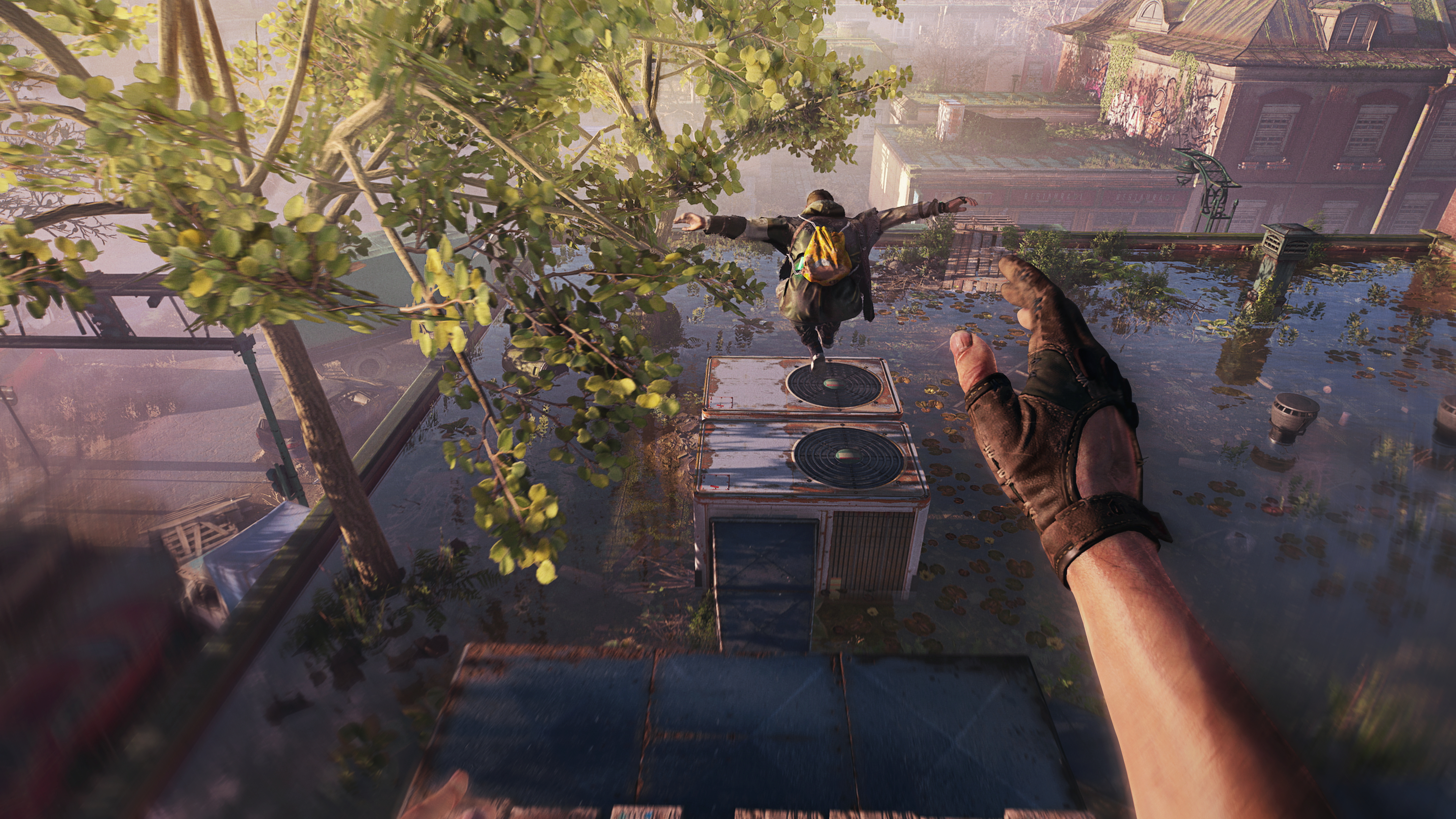Dying Light 2's head programmer replaced 50,000 ledges with a magical one
What a ledge-nd

“To be honest, the most obvious solution to a lot of zombie-related problems is just to run away”, Dying Light’s franchise director Tymon Smektala says. “Maybe save your weapon. You don't have to win every fight because they're everywhere”.
That is certainly the case in Dying Light 2; stuck in a high-rise city where every street is filled with these fumbling creatures, and with weapons in short supply, you don’t want to waste a perfectly good hammer on just any old face-eating monster.
However smart running away is, as the main character of this story, you have expectations to uphold. Especially when your character’s name spreads around the city in impressed hushed whispers as they discover you’re a Pilgrim, someone brave enough to venture outside the safety of town walls into the undead wilderness.
“Just running away doesn't feel too heroic”, Smektala says. But thanks to the inspiration of the little-known early 2000s French parkour movie Yamakasi, the devs over at Techland finally figured out that Parkour was the much-needed answer to the question of how to run away from the decaying cannibals in style.
Heroic retreat

After the release of Dead Island, “some members of the core team, namely our chief creative director and senior gameplay director, were prototyping things that could make it into a Dead Island sequel”, Smektała says. Several parkour movies piqued the team's interest, so they decided to use free running as a vector to tell their next undead story. But at first, it seemed their eyes were bigger than their stomach.
Lead programmer Bartosz Kulon, began by taking “the geometry out of previous Techland games and adding these invisible hooks to ledges so players could grab and climb”, Smektala says.
While this was a good idea at first, the end product was 50,000 ledges on a single map which wasn’t even close to fulfilling the parkour needs of Dying Light. Adding more wasn’t an option as Techland was developing this game for last-gen consoles, which struggled to calculate all these thousands of handholds.
Sign up for breaking news, reviews, opinion, top tech deals, and more.
The result is a city where you are free to climb almost any surface you come across
For the parkour to feel natural, the team wanted the entire city to be scalable, with logical handholds on every surface. It wasn’t enough for the team to give you just a few defined routes up the sides of a building. Parkour, after all, is about free-scaling architecture; find your own path through a city – not climbing ladders, staircases, and ropes left by people who have gone before.
“So Kulon, with a head full of ideas, sat down and invented a system which analyzed the geometry in front of the player and dynamically calculates which ledges can be grabbed”, Smektala says. This let the team replace 50,000 ledges with a single magical one that appeared only when you needed it.
The technical wizardry solved most problems with the lack of ledges and memory space. The result is a city where you are free to climb almost any surface you come across, escaping the gnashing teeth of the infected. However, that’s not to say it was an easy task, as from this point, it took Techland three years to complete.
Run the extra mile

Parkour in Dying Light started as a simple ability that allowed you to avoid the zombie hordes while looking cool, but in the end, it became a pillar of this apocalyptic game.
We are bombarded with many different options, opportunities, and things screaming at us
Tymon Smektala
The enhanced movement paved the way for some of the most fun I’ve had in a survival game in years and cemented both Dying Light titles as some of my favorite zombie games, hands down. As someone who plays a lot with the undead, it’s no longer enticing to me just to mow down hordes of zombies while standing on an upturned van. I want to be offered something more from the apocalypse, and parkour was the icing that this cake needed.
“I don't think it's just limited to the zombie genre," Smektala says, “but the market is oversaturated, so you have to come up with something new that will make you stand out”. Whether it’s awe-inspiring graphics, an emotionally gripping narrative, or just a great mechanic that allows you to enjoy bashing zombie brains, offering more is usually better.
“That's true about basically everything that happens in the media these days; we are bombarded with many different options, opportunities, and things screaming at us like, Hey, spend your time on me. Hey, spend your time on me, that you really have to do something that makes you stand out”, Smektala says.
Dying Light did stand out to me. While it’s certainly not as polished as the sequel, I can’t help but fall in love with the dynamic movement and freedom to explore every corner of the map. Even now, it’s a game I love to go back to with friends and replay again and again.

Elie is a Features Writer for TechRadar Gaming, here to write about anything new or slightly weird. Before writing for TRG, Elie studied for a Masters at Cardiff University JOMEC in International Journalism and Documentaries – spending their free time filming short docs or editing the gaming section for their student publications.
Elie’s first step into gaming was through Pokémon but they've taken the natural next step in the horror genre. Any and every game that would keep you up at night is on their list to play - despite the fact that one of Elie’s biggest fears is being chased.